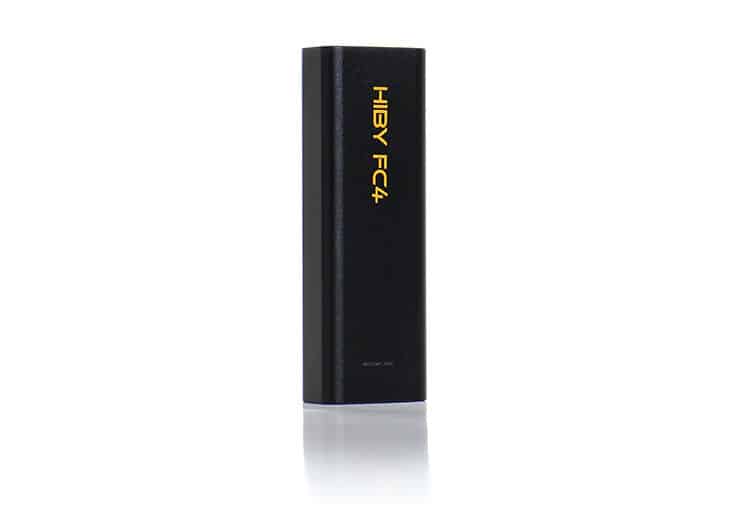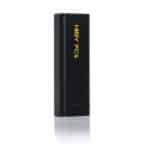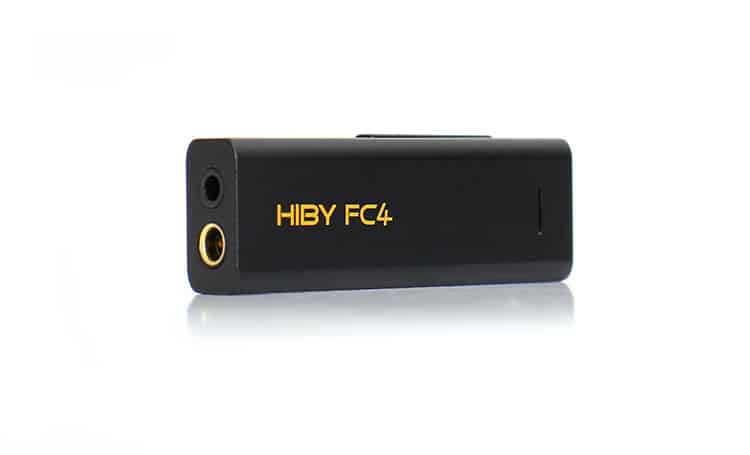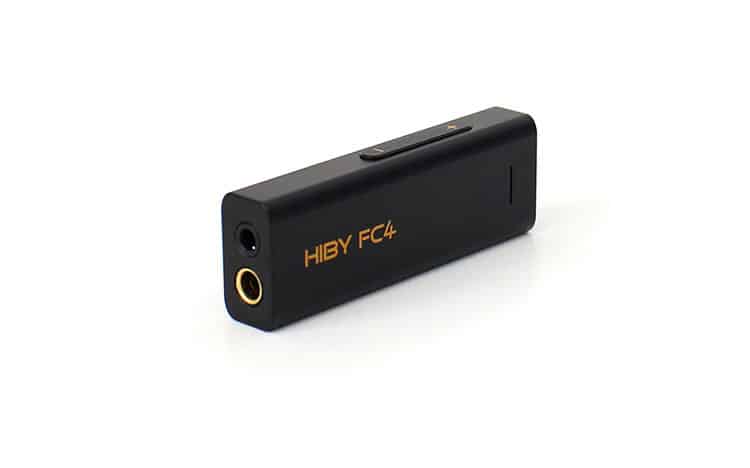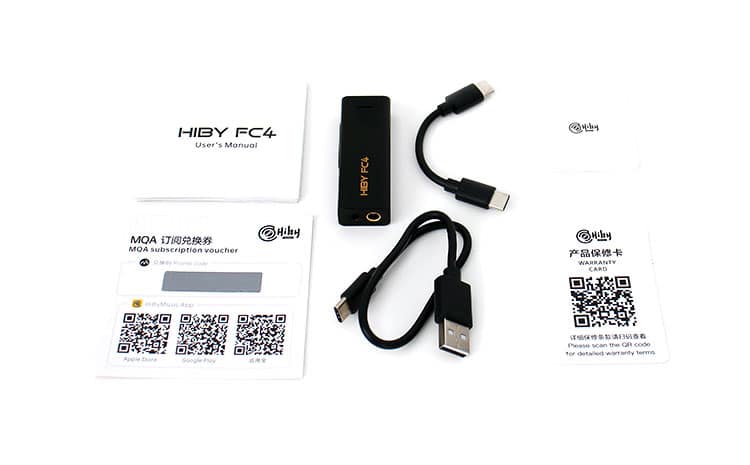Today, we review the new HiBy FC4 which is a dongle-type portable amplifier/DAC with up to DSD256 decoding, MQA, and 340mW of output power. It is priced at $99.
Disclaimer: This is a sample sent to us in exchange for our honest opinion. Headfonics is an independent website with no affiliate links. We thank HiBy Music for this opportunity.
You can click here to learn more about HiBy products that we have previously covered on our website.
Note, that this feature follows our latest scoring guidelines which you can read here.
HiBy just celebrated the fourth-year anniversary of their online store but they have been in operation since 2011, originally in software but now with an extensive hardware lineup.
To me, HiBy’s hardware forte now lies within their DAPs such as the RS6 but they make everything from cable assemblies, IEMs, and portable amplifiers. They also make dongle DACs just to name a few items they offer on their website.
The HiBy FC5 has been used in a few comparisons here after our main review because it’s a model that competes well in the vast sea of similar dongle DACs available today.
Right below the FC5 sits the FC4 which is somewhat similar to the FC5 in some minuscule ways but with a lower cost and a couple of addendums.
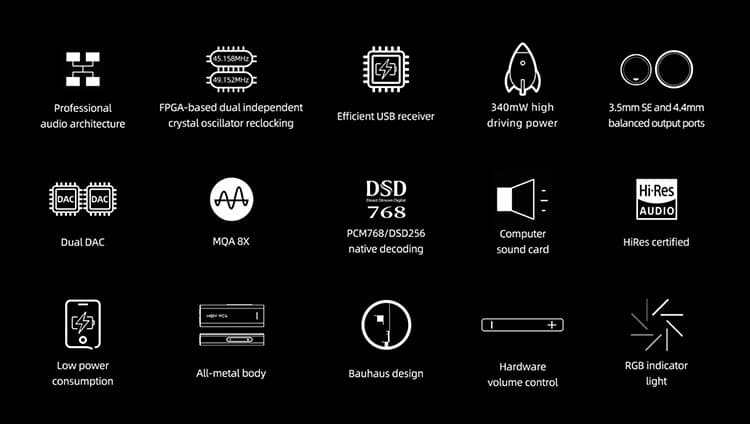
Tech Highlights
Both the FC4 and the FC5 share similar DAC chips. The difference lies in that the FC4 employs two ESS ES9218 chips in place of the FC5’s ES9281PRO chips which according to ESS technologies fall in a higher category and are considered top-tier chips. They should have very similar sonic characteristics.
However, the FC4 somehow manages a higher power output versus the FC5 which has a supposed upscale SOC plus two ES9603Q amplifier chips. The FC4 does double up on the FPGA-based crystal oscillators that keep those two chips in synchronicity.
An implementation I really like on the FC4 is the hardware level volume control which acts independently from the source volume control and in turn, gives the user a finer amount of volume control over other similar dongles. The implementation doesn’t seem to introduce any anomalies by doubling up on volume controls either.
There are two other important components worth mentioning here and those are the 28 nanometer USB receiver which claims high efficiency and a 416L onboard audio DSP that are both tuned for balance in sound signature and battery consumption efficiency.
Digital Formats
The FC4 can handle the usual stuff like PCM and DSD but it also does MQA rendering. PCM and DSD formats are rendered at a hardware level and reach 32-bit/ 768kHz and DSD256.
On the DSD decoding the higher rates are handled by the FC4 versus the FC5 which can only reach DSD128, besting the FC5 in that particular aspect.
Both these HiBy dongles do MQA at 8x rendering but it’s somewhat unclear if the folds are hardware or software rendered, or perhaps a combination of the two.
HiBy does specify that for MQA decoding to occur at that level one must use an app with bit-perfect mode and MQA capability like their HiBy Music app which I actually like for a few reasons.
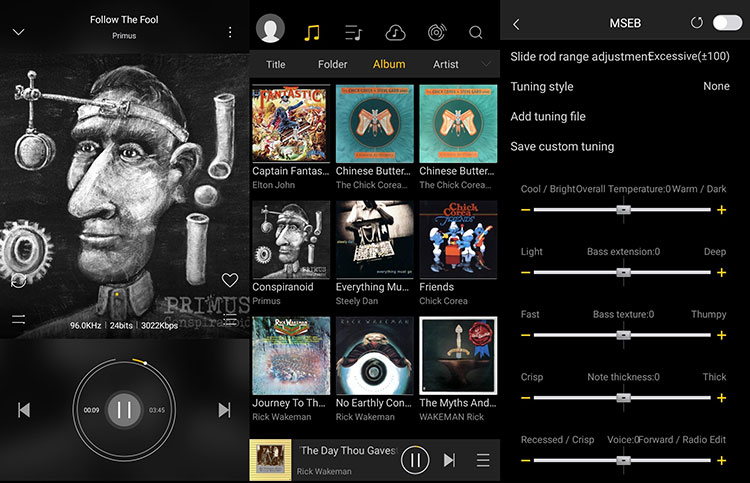
MSEB
There are two HiBy apps online, one called HiBy Blue which works with their Bluetooth gear exclusively, and the other one is a player called HiBy Music. This app is not just a player I must say. This player has a feature called MSEB which we love here on Headfonics!
Of course, the player has a 10-band equalizer, player skins, a file manager, Tidal login, a lossless USB structure, and all that but the MSEB changes the tonality of the dongle and/or the output of the dongle by means of sliders.
There’s an air setting, sibilance control, temperature, bass extension thickness, and extension adjustment just to name a few. By their names alone you could tell it caters to people who love to tweak their gear. This feature seems to be aimed at the audiophile more than the average buyer.
It might just be a fancy tone control but it seems to be a rather tweaked tonal exciter with tone control and I bet that practically anyone could eventually find a likable tuning within its functionality. You could also store different custom tuning preferences settings for later use once you find that perfect setting.
Performance Numbers
Looking at power output specifications alone one would assume that the FC4 is the top-of-the-line model over the FC5. Especially if you glance at its higher power output of 340mW balanced and 110mW SE on a 32Ω load. Voltage outputs are at 3.3vrms and 1.9vrms at the same impedance.
Frequency response is listed at 20 to 90kHz on both outputs and at the same impedance. However, the SNR raises on the balanced side to 123db versus a 120db rating off the SE side which is not a large leap but as they say, something is something.
Design
Are we getting more for less here? It sure seems so up till now. Well, it’s understood that the FC5 had only one headphone out which is a single 4.4mm connection and that HiBy supplies the buyer with a 3.5mm adapter.
The FC4 has both a 4.4mm and a 3.5mm single-ended connection onboard with a USB-C female connector at one end. All the electronics and the general aspects of the FC4 are Bauhaus inspired.
There is something good about having a single 4.4mm if you use it exclusively because the other plug hole then sits open and could expose the unit to moisture and rain plus the occasional pocket lint. Someone needs to make covers for these unused ports in my opinion.
The shell is generally made of metal, aluminum it seems, with an anodized matte black finish. The shell feels rather lightweight and one side feels somewhat hollow if you tap on the surface. That side seems to have a cover with 2 set screws. The other side feels more solid and seems to be thicker and part of the main shell casting.
The shell is rather beefy in size but not so much in weight which scales in at 21.7 grams and measures 65.3×22.1×11.9mm. The dongle itself feels somewhat light and there are other models which seem lighter but it can definitely go the other way as well.
I/O
Simply put there’s a USB-C input port with two headphone output jacks, a 4.4mm Pentaconn, and a 3.5mm single-ended connection, both of which are controlled at a hardware level by the rocker-type volume control.
The onboard hardware volume control is placed on one side of the dongle and once again I must again mention that it’s a 30-step hardware level volume control that acts independently from the source volume.
Packaging and Accessories
The HiBy FC4 comes with some basic items like a dual-sided male USB-C cable to use with most Android phones but again iPhone users have to go out and purchase a lightning cable although the FC4 is stated to be compatible with iOS and MAC.
A twist from the norm here is that instead of getting an adapter to convert the supplied cable to full-size USB HiBy just gives you another cable. The box it all comes in is rather small so not much will fit inside.
The other inclusions are the usual owner’s manual, an MQA subscription voucher, and a warranty card as well as the HiBy quality assurance and inspection card.
Sound Impressions
Summary
The general characteristics here are warm to neutral and a husky bass response that digs deep The midrange and treble tuning seem to be almost equal in presence but for certain their quality production is done in a clean and realistic manner as well. It seems HiBy has done a good job tuning this device.
There’s a slight bass bloom in the lower regions but not overly done or too artificial and it subtly introduces a hint of depth and spice in that region.
Perhaps it’s just a character of the rather high amount of power available but I think it’s just a good capability of low-end extension since there seems to be plenty of representation even below the 20Hz mark.
The midrange is crisp and natural sounding and probably highlights the best aspects of the FC4. It has an ability to stay true and not veer from a natural character.
There seems to be a high amount of detail that is produced within the midrange section plus the staging in this area seems to be very well placed far as individual components in a recording are concerned.
High frequencies are clean, well extended, and can climb past and way beyond my human ears. They also could stage well and seem to have an accurate sense of placement within the stage. The high frequencies are particularly the area where noise will rear itself but I personally did not detect any.
Staging and dynamics
Since the HiBy has such a dark background, the particular fact tends to help with unmasking its dynamic response and helps in bringing forth a good rise and fall in crescendo. The generous power output helps out to bring forth a punchy character.
The HiBy FC4 seems to portray a good amount of layering as long as the headphone or IEMs are capable of interpreting the output correctly. I did find the imaging to be somewhat underfilled at times but then again most dongle DACs present this character except for some of the higher tier dongles.
The FC4 seems to be capable of portraying one of the larger spaces in this price category to its credit and it seems to place elements accurately, especially within the right and left planes.
The center channel seems a bit inward so one could say that more forwardness is needed for a more completed staging effect far as depth.

